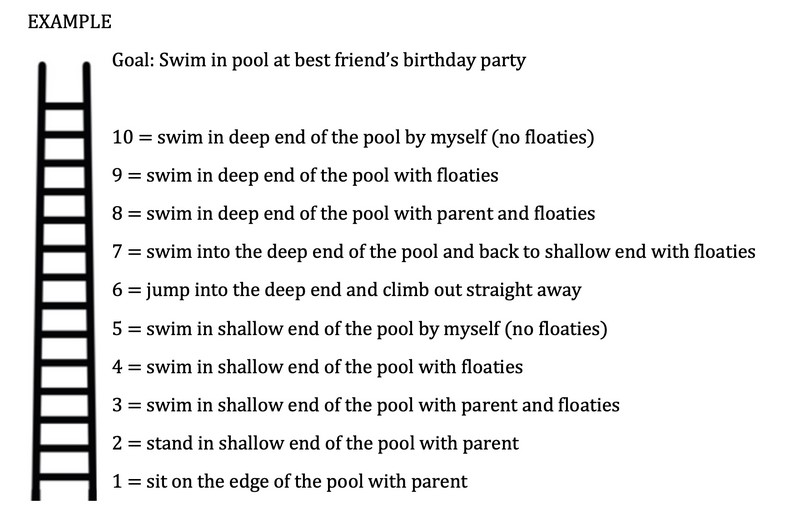Using Exposure therapy to help child anxiety

Childhood anxiety can be debilitating and cause significant distress for children and parents alike.
A primary maintaining factor of anxiety is avoidance of a feared situation, event, or object (i.e., stimulus). A child may avoid being alone, speaking in front of their classmates, swimming in the local pool, or thinking about a certain topic.
One of the most effective strategies to treat child anxiety is exposure or facing their fears.
Exposure
Exposure is grounded in the behavioural principle of habituation and is a common behavioural approach used in Cognitive Behavioural Therapy. Habituation occurs when a child’s behavioural and sensory response to a feared stimulus reduces over time after repeated exposure to the feared stimulus.
Children can confront their fears directly (or in vivo), such as diving right into the pool or giving a speech in front of others. Sometimes it can also be useful for a child to imagine the feared situation or be exposed to the stimulus via a virtual representation, such as viewing videos or photos (often termed as in vitro).
Selecting a fear to face
The first step of exposure is selecting a fear to face. The selected fear to expose a child to must not be too confronting or challenging that they refuse to engage, but not too easy that it does not cause some level of distress. A great way of seeing how distressing a situation, event, or object is to a child is by getting them to rate their anxiety-provoking stimuli on a scale of 0 (no fear) to 10 (maximum fear). For children, using a fear thermometer can be a useful way to rate stimuli.

In addition to this stimulus rating, having a conversation with a child about each feared stimulus is important and can be helpful in identifying a goal to work towards. Having a goal can be a good motivating factor for completing each step. For example, a child may have a pool party coming up or a swimming carnival that they wish to participate in, and therefore be motivated to face their fear of water.
Graded exposure (i.e., climbing the ladder)
Once a child has selected a fear to face and a goal to work toward, it is now time to break this down into steps. Using a stepladder approach can be a useful way for children to understand how they are going to face their fears in a gradual, step-by-step process. The stepladder approach gets a child to face their feared situation in increasing increments of time and/or decreasing the use of safety behaviours (e.g., having a parent nearby). At each step, the child is encouraged to use coping strategies they have learnt such as breathing or relaxation skills that reduce anxiety. The child will climb the ladder, completing each step at least three times or until the situation no longer causes them distress. Parents can also implement a reward system to increase motivation. As a child climbs up the ladder, their confidence often grows too, and they learn how to be brave and the boss of their anxiety.

Childhood anxiety can be overcome with consistent effort and a dose of compassion.
If your child is struggling with anxiety and you’re not sure where to start with creating an exposure hierarchy for them, contact us at Prosper Health Collective so we can assist your child to overcome anxiety.